All about the big "daisies"

All about the large "daisies" will need to know those who have devoted their vigorous activity to the decorative design of a summer cottage, an adjoining plot or even a modest front garden under the windows of an apartment building. A miniature Japanese garden, a rock garden, a rockery, a border under a fence, a framing of a path and a multi-tiered flower bed - this is a small list in which these picturesque plants will come in handy in the warm season to create aesthetic visualization.
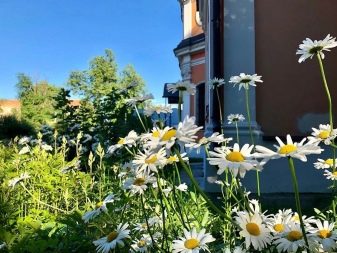
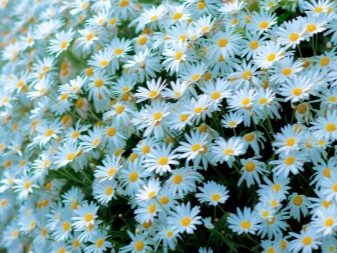
Overview of species and their varieties
Even without knowing the scientific names of these ornamental plants, the so-called large "daisies" can be used in the design of variable flower beds and improvised devices, which have recently been especially popular with homeowners and summer residents.
The romantic plant is unpretentious in its care and generously thanks the florist who chose it as a decor. Some of the varieties are distinguished by bright colors and lush greenery. All species are in perfect harmony with cereals and other plants used in the formation of aesthetic landscape design.
Flowers of considerable diameter in diameter, the first bloom in early summer and the second - until late autumn.
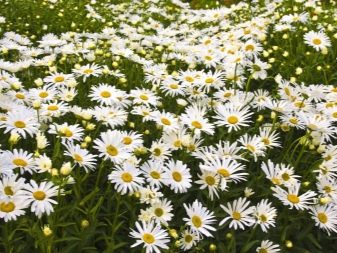
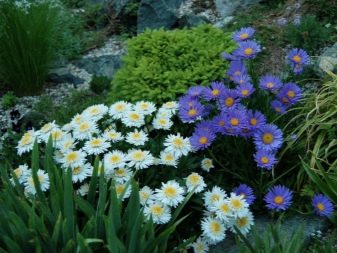
There are perennial and annual chamomile, tall and short, with simple and double inflorescences, white or multi-colored, highly decorative. In modern reality, there are more than 25 species that botanists identify as separate, and growers combine into the general category "large garden" by the yellow core and the shape of the petals.
The efforts of breeders have led to the emergence of multi-colored, beautiful, original and interesting varieties, causing only distant associations with the humble chamomile, common in the wild.
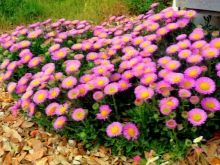
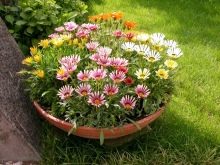
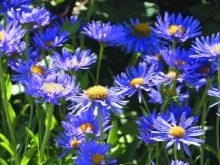
Only a few specimens can be attributed to the popular species that can be found in flower beds and in flower beds. Every fan of ornamental plants has their own priorities, developed under the influence of fashion, insistent recommendations from special sites and even just advice from neighbors who have shared seeds.
- "Alaska" - white, as you might guess from the name, with two-row circular petals, with the usual large orange-yellow core. A long-lasting plant, the bushes of which can grow up to 80 cm in height, dispenses with special care, can grow in any area, ennobling it with large flowers up to 10 cm in diameter.It requires moderate watering and light, you can propagate the plant by simply dividing the formed bushes.
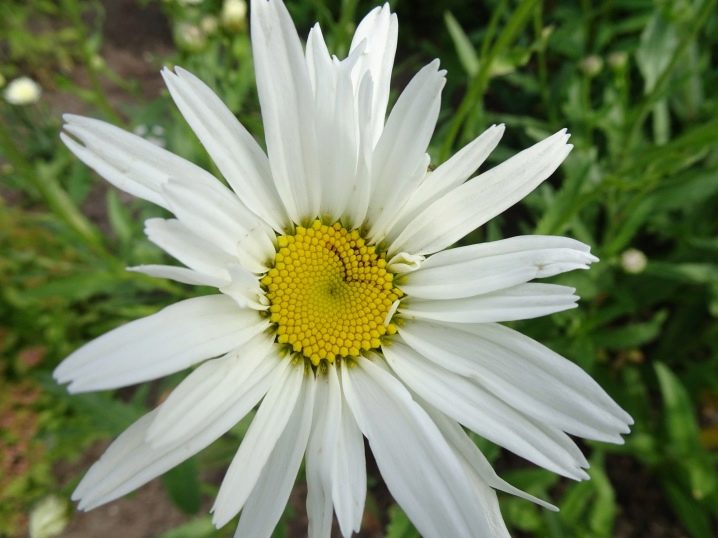
- Handsome feverfew - a perennial, which you can acquire simply by planting seeds on the site in the autumn and the next year admire the bushes that reach one and a half meters in height. Giant chamomile comes in red (maiden feverfew) and beautiful raspberry pink (Caucasian chamomile).

- Large-flowered lemongrass, showing its decorative effect in well-lit flower beds. It is enough to acquire a perennial and separate the bushes every four years to admire the white flowers, which reach 15 cm in diameter. "Ballet" - the most popular of the nivyanniki, can be used not only for group plantings, but also for cutting into bouquets, in rows of beds, and in multi-tiered flower beds - for the lower row.
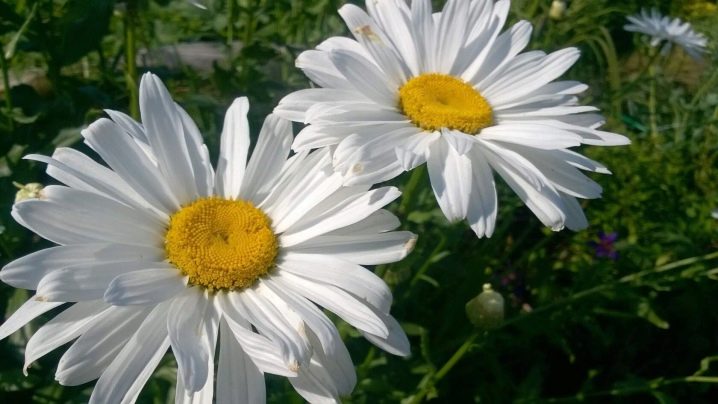
- Yellow, capable of growing with the same intensity in the shade and in open space, requiring division no more than once every five years, generously decorated with openwork leaves - this is doronicum.
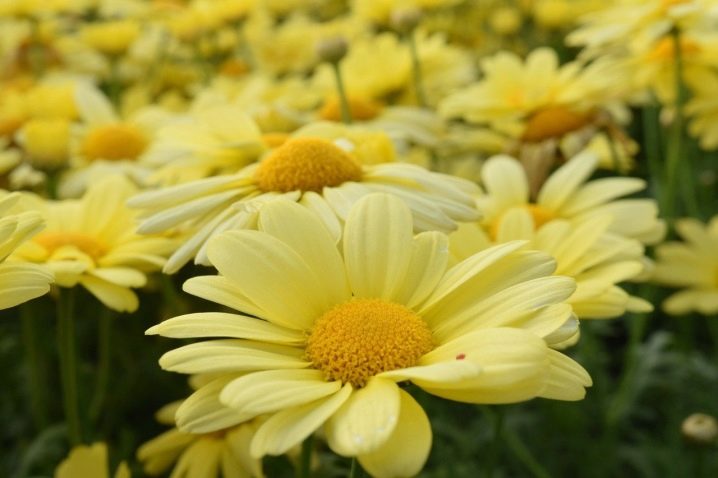
- Royal chamomile - varietal echinacea, which has been in trend among flower growers for several years, especially pink terry "Razmataz" and "White Double Delight", in the shape of a dome with a lime eye in the center.
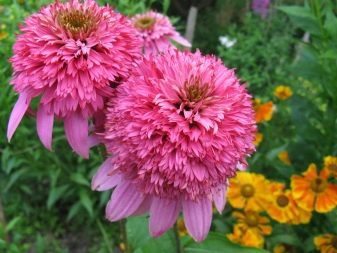

Decorative or pharmacy chamomile is naturally endowed with white petals. The blue ones are cineraria, the multi-colored ones are echinacea or anemone, there is a lemon-colored pyrethrum that vaguely resembles chrysanthemums or goat.
If you wish, you can find lilac daisies of the most variable shades, plant purple osteospermum.
Growers see a distant similarity in anacyclus, gelichrisum, arctotis and gatsania and gerbera. All these species are mistaken by inexperienced plant breeders for large garden daisies, but the name is not an obstacle to use for decorative purposes.


Landing
You can easily get large daisies on your site and subsequently just take care of perennials, but you will have to plant annual crops annually. That's why People who are constantly improving their land tenure often prefer perennial crops, for which seed can be obtained in three ways.
- Buying seeds from a reputable agricultural firm or a specialized store. When buying, you need to pay attention to the originality or hybridity of the variety. The second category is not suitable for collecting seeds, some of them do not retain the characteristics of the first generation or do not germinate at all. This explains the small demand for seeds obtained at home for planting. It's easier to purchase them annually.

- The seedling method also requires seeds. It is more expensive because it requires growing and picking young plants, but it is more popular because it allows perennials to bloom without waiting for next year. You need to know the timing of seed germination and seedling ripening in order to plant it in a timely manner after the soil and air warms up, and the plants will not be threatened by recurrent frosts.
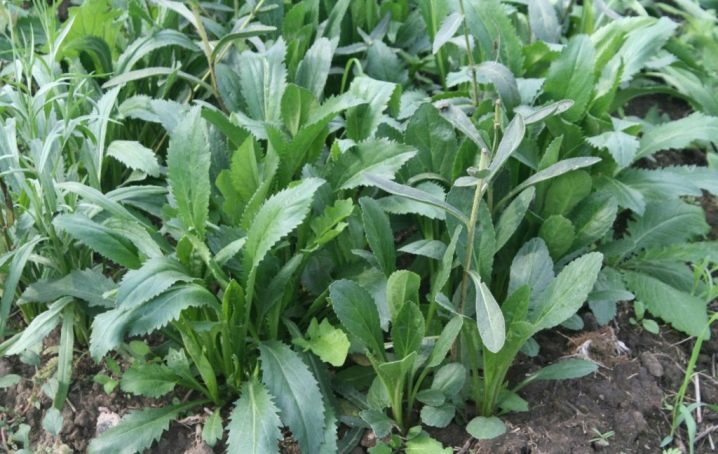
- Dividing the bush will require some time at the beginning of autumn.when there is a lot of work on the site. But it does not require additional funds from the family budget and very simply allows you to replenish resources for reproduction. Transplanting segments in early autumn will allow them to harden before frost, accumulate nutrients and winter safely. In spring, plants will begin to delight their owners with rapid growth and abundant vegetative mass.

Using the most convenient method for yourself, you need to take care of choosing a suitable place in advance. It rarely depends on the species chosen; most garden daisies prefer good lighting.
The soil should be prepared in advance by adding fertilizers (mineral or organic matter can be used).
If you are planning a decorative structure, such as a rockery or a multi-row flower bed, you can think of an option with planting seedlings in peat pots or purchasing soil for planting flower plants in a specialized store.
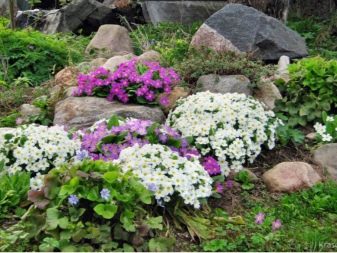

Growing care
It does not matter where the cultivation of decorative culture is conceived - in the country, in the personal plot or in a small front garden. The technology does not change from this, it is simply observed in accordance with the chosen method of reproduction and breeding.
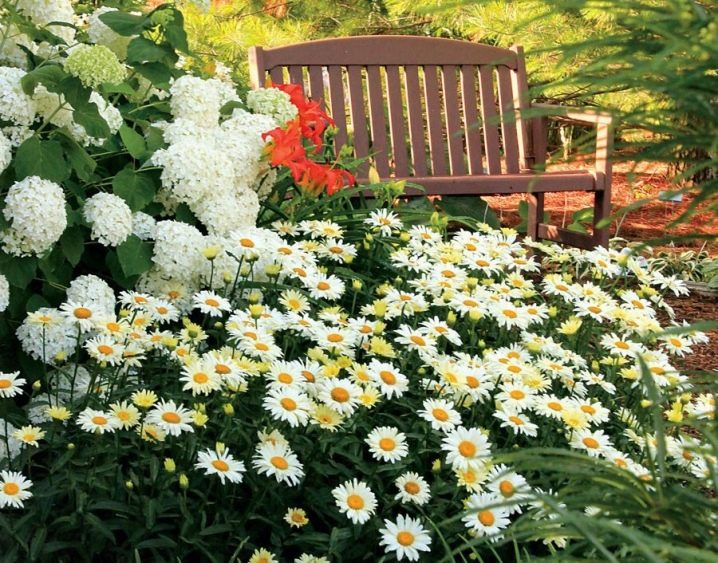
Beautiful plants should be grown on slightly acidic soil, in well-lit places, so you need to plan new plantings in advance, as well as prepare the soil by introducing nutrients. Experts say there are several circumstances that can make a venture unsuccessful:
- insufficient amount of water, light and feeding;
- incorrectly chosen distance between seedlings or separated bushes;
- poor quality planting material;
- non-compliance with agricultural techniques (in perennials);
- untimely transplant (beginners can be transplanted after 5 years, in the future, the rejuvenation procedure will be required every three years).

It may seem that there is a lot of work with them, but this is a subjective impression. Having acquired a perennial plant, you need to plant it every 4-5 years. Agrotechnics is simple, the unpretentiousness of plants is mentioned in every publication. Much depends on the type you choose. The planted new plant just needs to be left alone, mulching the surrounding space.
If the holes were located at the correct distance (35-40 cm), and the soil was prepared in advance, there will be no problems with survival and flowering.
If adult plants are moving, the step is chosen depending on their height. Sometimes it may be required up to 80-100 cm. Experts advise using a complex composition that is sold in stores for gardeners and flower growers, in it all components are balanced, and there is no need to choose the proportions of organic matter and mineral fertilizers.
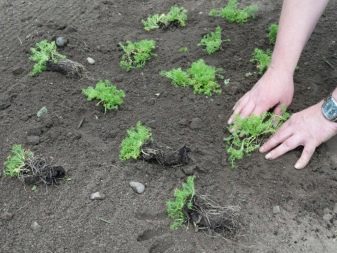
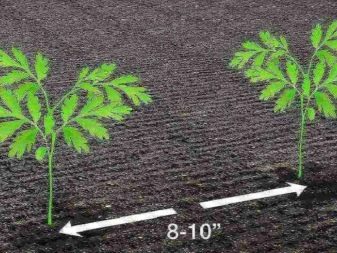
Watering
Chamomiles need water in moderation. They react equally badly to excess moisture and its absence. The statement about drought tolerance does not contradict the truth, but experienced flower growers know that this should not be abused. Water supplied on time will make the greenery more beautiful, enlarge the flowers, and the stems will grow taller.
The determining factor is age and survival time. Younger plants need more moisture.
They are watered more often and more abundantly. For those who have mastered and grown up, the main thing is to prevent the soil from drying out. Mulching, loosening of the soil helps in this. Abundant watering must be done during transplantation, rejuvenation and division.

Top dressing
It can be combined with watering, so it will be less time-consuming, but the benefits of this are undoubted - the nutrient components penetrate into the soil more easily and are absorbed faster through the root system. Here are some tips from expert flower growers and baits that work flawlessly.
- Watering with a solution of mullein or chicken droppings. This is done at the beginning of the warm season.
- Using freshly cut grass or greenery after weeding. It is poured with water and the mixture is allowed to ferment for 7 days, then diluted in a ratio of 1: 10.
- Bud formation and flowering require care. Therefore, fertilizers are applied between two water spills.
- Nitrogen fertilization under the roots will be required in early spring.
- Watering with any fertilizer solution is carried out in the morning or in the evening (early morning time is preferable).
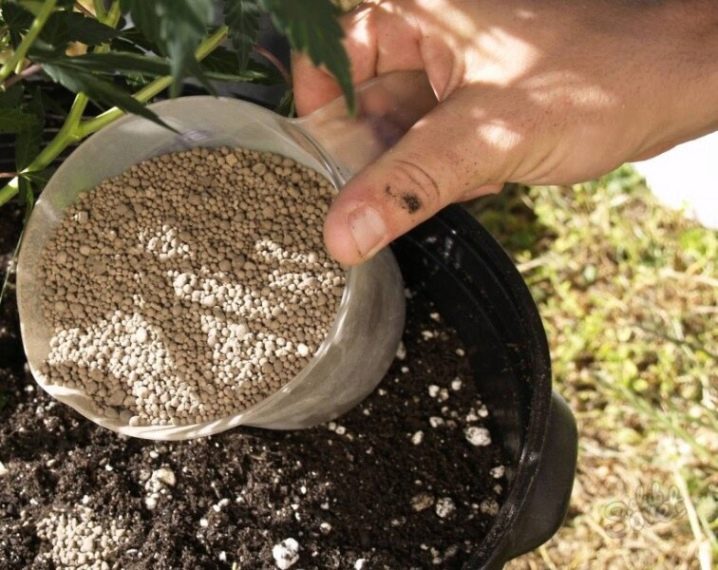
Proper agricultural technology is not only watering and feeding, but also timely pre-winter pruning of stems, removal of dying segments during the flowering period, sprinkling clumps for the winter with covering materials, weeding and loosening of the soil throughout the vegetative period. Chamomile does not like acidic soil, so the soil should be checked periodically and, if necessary, deoxidized with a solution of lime or dolomite flour.
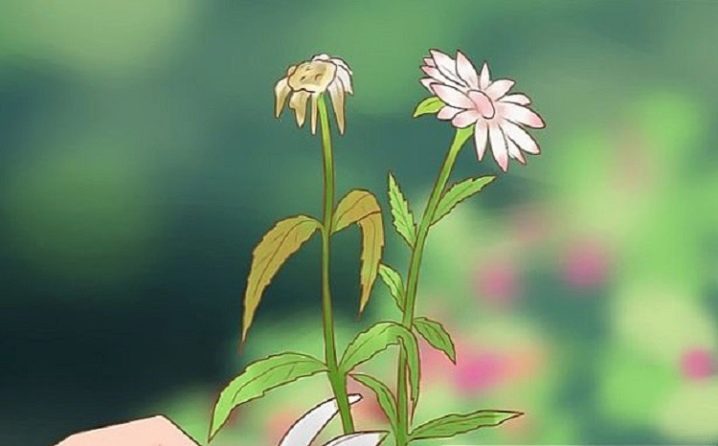
Beautiful examples
In the variety bred by breeders, one can only conditionally single out the most spectacular and picturesque, because many of them are especially good with proper care and in a decent frame. The following types and varieties deserve attention.
Nivyanik magnificent, which looks great in flower beds, framed by other plants, dominating even bright tones with its white boil with yellow centers.
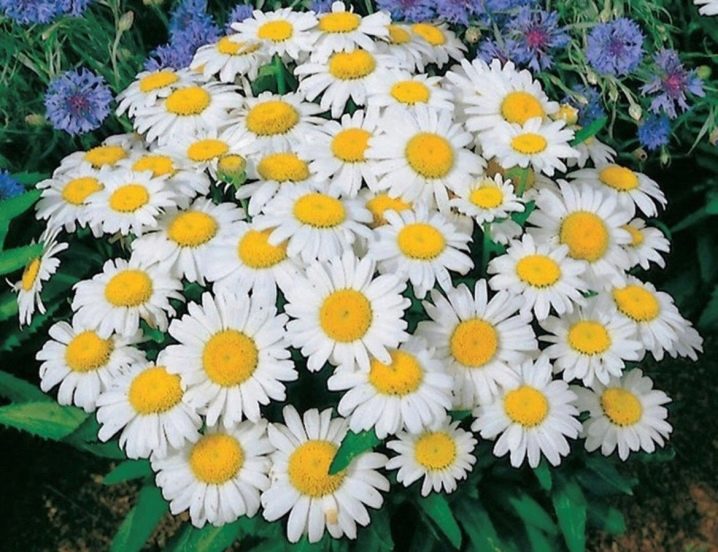
Nivyanik "Fiona Goghill", an unmatched yellow shade, to which it is difficult to find a definition.
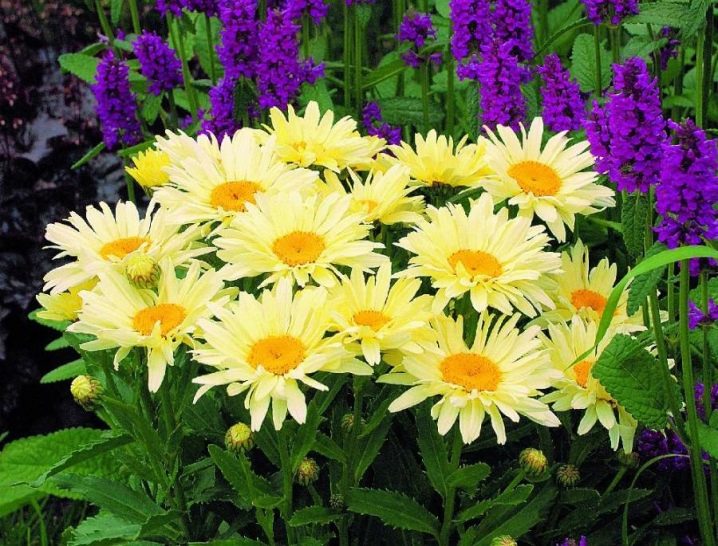
Alpine blue aster - a spectacular perennial, of a delicate pastel shade, shaded with dark green carved leaves.

An excellent choice - chamomile "Garden Princess", for many years, the constant leader in the demand for seeds of ornamental plants among buyers.
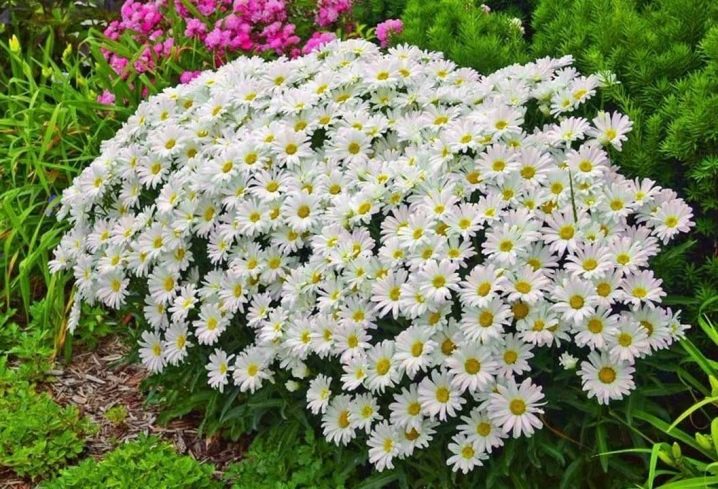







































































































The comment was sent successfully.